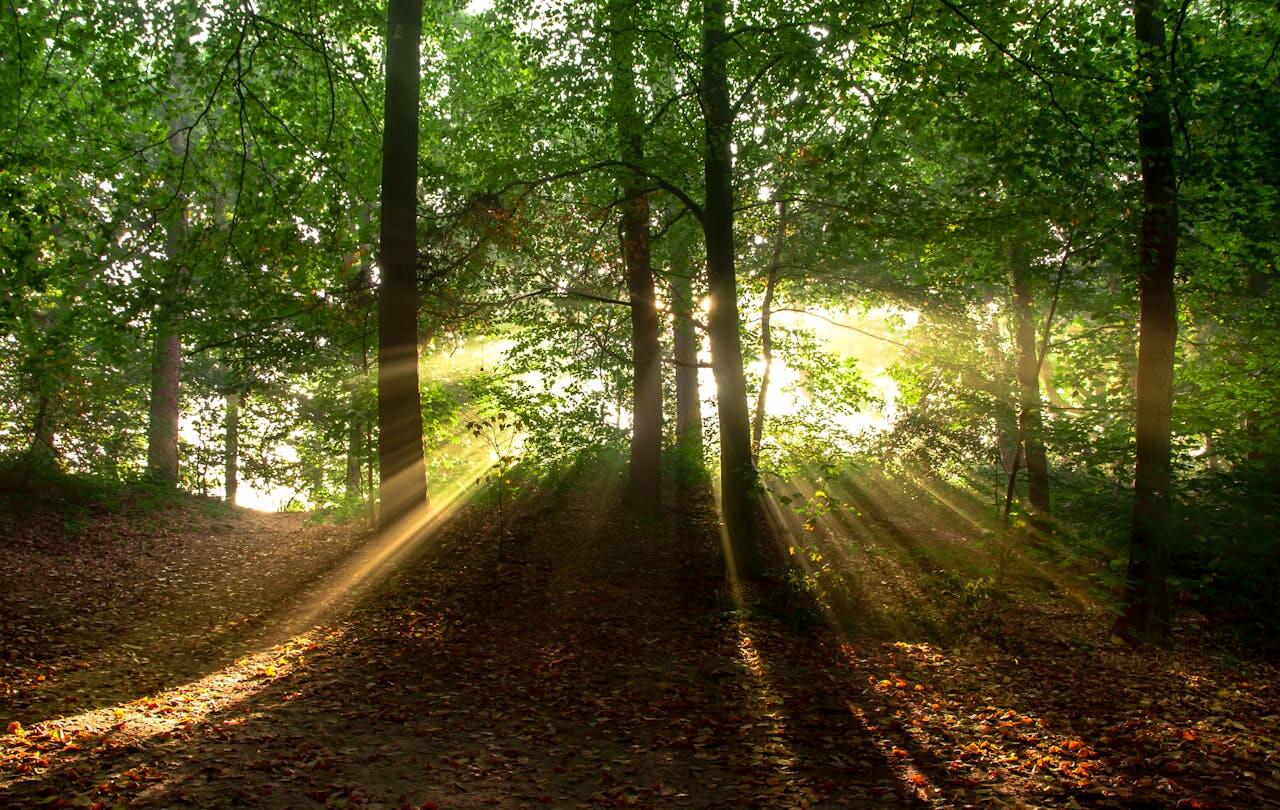Introduction: Why Natural Light Makes or Breaks a Photo
Every unforgettable nature photo begins with light. Whether you are chasing a soft dawn glow, dramatic storm clouds, or a fiery sunset, understanding and controlling natural light will transform your photography.
In this in-depth guide, you’ll learn essential natural light photography tips to capture landscapes, forests, and mountains in breathtaking high definition.
New to outdoor shooting? Build a solid foundation with our Ultimate Beginner’s Guide to Nature Photography (HD Edition).
1. The Power of Natural Light

Natural light isn’t just illumination—it’s the mood of your image. From soft morning mist to bold mid-day contrast, light determines color, depth, and atmosphere. Mastering natural light photography tips lets you plan your shoot instead of leaving it to chance.
2. Golden Hour: The Photographer’s Favorite Time
2.1 What Is Golden Hour?
Golden hour occurs roughly one hour after sunrise and one hour before sunset, when the sun is low and light travels through more of the atmosphere.
Results:
- Warm, rich tones
- Long, dramatic shadows
- Soft, flattering highlights
2.2 Golden Hour Tips
- Set your aperture to f/8–f/11 for crisp depth of field.
- Use a tripod if shutter speeds drop.
- Experiment with backlighting to create glowing edges around trees or animals.
3. Blue Hour: Cool and Atmospheric
3.1 What Is Blue Hour?
Blue hour is the period before sunrise and after sunset when the sky glows in deep blues and purples.
It’s ideal for:
- Minimalist landscapes
- Cityscapes with early lights
- Reflective water scenes
3.2 Blue Hour Tips
- Use longer exposures (1–5 seconds) for silky water and cloud movement.
- Set white balance to Tungsten or Custom for accurate cool tones.
- Include artificial lights or the moon for added drama.
4. Midday Sun and Harsh Light
While many photographers avoid midday sun, it can create high-contrast drama and bold textures.
- Shoot black-and-white landscapes to emphasize shapes.
- Use a polarizing filter to reduce glare on water and foliage.
- Seek natural shade to soften portraits or macro shots.
5. Cloudy Days and Overcast Skies
Soft, even light from clouds is perfect for:
- Forest photography where filtered light reveals fine details.
- Waterfalls and rivers where balanced exposure avoids blown highlights.
- Macro photography of flowers and insects.
Pro tip: Slightly increase exposure compensation (+0.3 to +0.7) to prevent dull images.
6. Capturing Dramatic Weather
Some of the most striking nature images happen when the weather is changing.
6.1 Storms and Rain
- Carry a weather-sealed camera or rain cover.
- Use fast shutter speeds (1/500 sec) to freeze raindrops or slower ones (1/15 sec) for streaking effects.
6.2 Fog and Mist
- Manual focus can help when autofocus struggles.
- Underexpose slightly (–0.3 to –0.7) to keep fog rich and moody.
6.3 Snow and Ice
- Increase exposure compensation (+1) to keep whites from turning gray.
- Protect gear from condensation by sealing it in a plastic bag before returning indoors.
7. Key Natural Light Photography Tips at a Glance
- Check sunrise and sunset times with apps like PhotoPills.
- Scout locations a day early to plan compositions.
- Carry a lightweight tripod for low-light shooting.
- Adjust white balance to match the lighting mood.
- Always shoot in RAW for maximum editing flexibility.
8. Best Camera Settings by Scenario
| Situation | Aperture | Shutter Speed | ISO | White Balance |
|---|---|---|---|---|
| Golden Hour Landscape | f/8–f/11 | 1/60 sec or slower on tripod | 100–200 | Daylight |
| Blue Hour Reflections | f/8–f/11 | 1–5 sec (tripod) | 100–400 | Tungsten/Custom |
| Cloudy Forest Scene | f/5.6–f/8 | 1/30–1/2 sec | 200–400 | Cloudy |
| Stormy Skies | f/8 | 1/250 sec | 200–400 | Auto/Custom |
These settings are starting points; adjust according to your creative goals.
9. Composing with Light
Use light itself as a compositional tool:
- Backlighting creates halos around leaves or animals.
- Side lighting enhances texture and depth in mountain ridges.
- Spot lighting draws attention to a single illuminated subject.
10. Editing for Natural Light Photography
Post-processing should enhance—not overpower—your natural light.
- Adjust highlights and shadows to maintain detail.
- Subtly increase vibrance for realistic color.
- Use gradient filters in Lightroom to balance skies and foregrounds.
11. Common Mistakes to Avoid
- Relying on auto mode: Manual or aperture priority gives better control.
- Over-saturating colors: Keep edits natural to preserve mood.
- Ignoring weather apps: Sudden changes can mean missed opportunities.
12. Keep Growing as a Natural Light Photographer
Light is never static. Keep experimenting with:
- Different times of day and seasons
- Creative long exposures for moving clouds or stars
- Combining natural and artificial light for dramatic effects
Explore More on NaturePhotographyHD.com
Continue building your skills with these expert resources:
- The Ultimate Beginner’s Guide to Nature Photography (HD Edition)
- 12 Expert Wildlife Photography Tips for Capturing Nature in Stunning High Definition
- Best Camera Settings for Landscapes, Forests, and Mountains
Head outdoors and put these natural light photography tips into practice—your next breathtaking image could happen at sunrise, sunset, or the moment a storm breaks.

